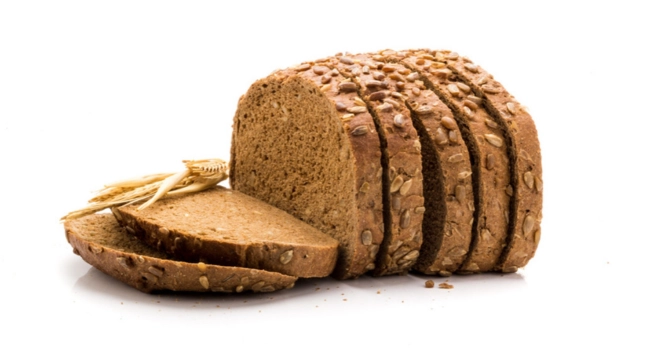The Real Count : Calories in Brown Bread Uncovered

When considering, calories in brown bread, it’s important to recognize its role as a healthier alternative to white bread, making it a staple in various diets globally.
Brown bread is primarily made from whole wheat flour, which retains the bran and germ of the wheat grains. This contrasts with white bread, often made from refined wheat flour.
The preservation of these components in brown bread not only contributes to its unique nutty flavor and denser texture but also significantly enhances its nutritional profile, including its caloric content. This aspect of brown bread makes it a preferred choice for those mindful of their dietary intake and looking for nutritious bread options.
Its popularity stems from its perceived health benefits, including higher fiber content and a richer array of vitamins and minerals. As consumers become more health-conscious, brown bread has emerged as a preferred option for those looking to make healthier dietary choices.
Calories and Protein Content in Brown Bread
| Bread Type | Serving Size | Calories | Protein |
| Brown Bread | 1 slice | 60-80 calories | 2-3 grams |
| Brown Bread | 2 slices | 120-160 calories | 4-6 grams |
| Brown Bread | 4 slices | 240-320 calories | 8-12 grams |
| White Bread | 1 slice | 65-85 calories | 1-2 grams |
| Whole Wheat Bread | 1 slice | 70-90 calories | 3-4 grams |
| Multigrain Bread | 1 slice | 65-85 calories | 3-4 grams |
Nutritional information
| Nutrient | Per 1 Slice (Approx. 28g) | Per 2 Slices | Per 4 Slices |
| Calories | 60-80 | 120-160 | 240-320 |
| Protein | 2-3 grams | 4-6 grams | 8-12 grams |
| Total Fat | 0.5-1 grams | 1-2 grams | 2-4 grams |
| Saturated Fat | <1 gram | <2 grams | <2 grams |
| Carbohydrates | 12-15 grams | 24-30 grams | 48-60 grams |
| Fiber | 1-2 grams | 2-4 grams | 4-8 grams |
| Sugars | 1-2 grams | 2-4 grams | 4-8 grams |
| Sodium | 110-170 mg | 220-340 mg | 440-680 mg |
Brown Bread in Weight Management
Integrating brown bread into a weight loss or management plan can be effective due to its balanced caloric content and nutritional profile.
Brown bread, made from whole wheat, is rich in dietary fiber, which aids in digestion and promotes a feeling of fullness, helping to curb overeating. Its caloric content, typically ranging between 60-80 calories per slice, makes it a manageable part of a calorie-controlled diet.
When using brown bread for weight management, portion control is key. Opting for one or two slices rather than larger quantities can help keep calorie intake in check.
Also, pairing brown bread with healthy toppings like avocado, lean protein, or fresh vegetables can enhance its nutritional value without adding excessive calories.
Choosing the Right Brown Bread
To select the healthiest brown bread options, consider the following tips:
1. Whole Grain Content: Look for bread that lists ‘whole wheat’ or ‘whole grain’ as the first ingredient. This indicates a higher nutritional value compared to bread made with refined grains.
2. Low Added Sugars: Some brown breads contain added sugars to enhance flavor. Choose bread with minimal added sugars to reduce unnecessary calorie intake.
3. Fiber Content: High fiber content is a hallmark of healthier brown bread. Fiber aids in digestion and contributes to a feeling of fullness.
4. Minimal Processing: Opt for bread with fewer additives and preservatives. The shorter the ingredient list, typically the less processed the bread is.
5. Nutrient Fortification: Some brown breads are fortified with additional nutrients like B-vitamins and iron. These can be beneficial, especially in diets lacking in these nutrients.
6. Sodium Levels: Check the sodium content, as some breads can be high in salt. Lower sodium options are preferable for a heart-healthy diet.
By considering these factors, you can select brown bread that not only fits your taste preferences but also aligns with your health and weight management goals.
![]()












